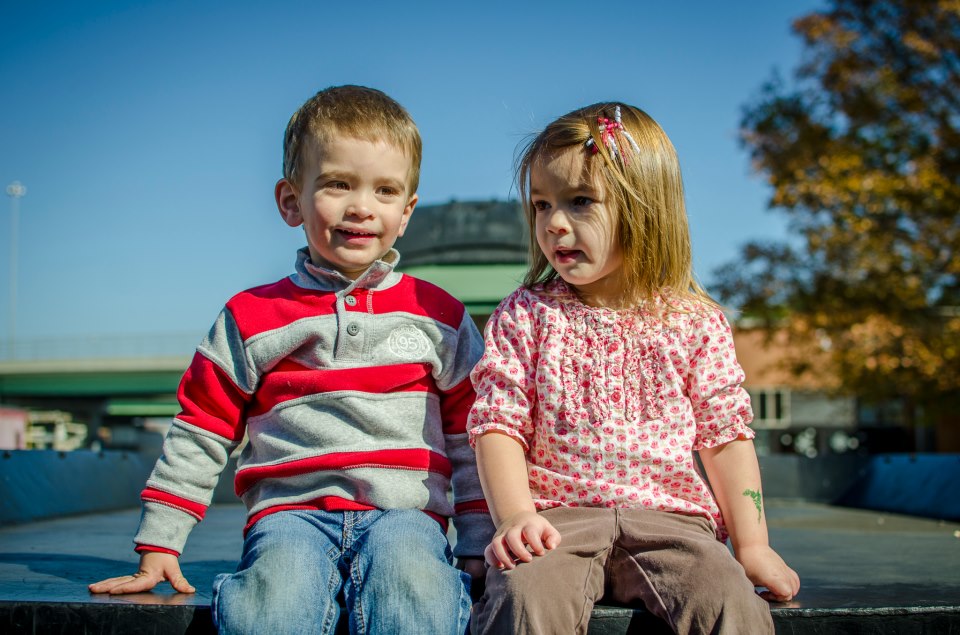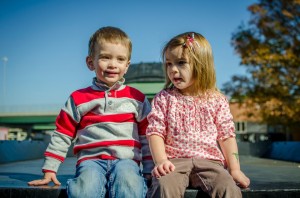A dear friend of mine is from Ukraine and she and her husband primarily speak Russian in their home. Since her children are close in age to my own (and we enjoy the same vintage of red wine), we have frequent play dates. As a nerdy Speech-Language Pathologist mama, I can’t even begin to tell you how cool it has been to watch my daughter and her son play as they were both learning to communicate. My daughter spoke English and he a mixture of tones and sounds with some words tossed in here and there. As a mom I had no idea what they were “talking” about, but they never seemed to miss a beat in their communication.
As I began to research for this post, I realized how truly remarkable their early communication really was.
An article on LiveScience.com entitled How Bilingual Babies Keep Languages Separate, reported that “bilingual tots use qualities like pitch and duration of sounds to keep two languages separate”.
Studies show that infants and toddlers who grow up in bilingual homes often mix the two languages they hear in their home. Even babbling babies have been noted to babble differently according to the language of their communication partner (Johnstone, 2004). This is called code-switching.
Check out this amazing video of a baby using German with Papa until the moment he sees his Mama and switches to Japanese.
Ganishi (1975) found that 4 to 6-year old children consistently applied the situational rule that they speak the language their listener knew best. Other studies have noted this code-switching as early as 3 years old!
A helpful article in understanding bilingual babies was in The New York Times entitled Hearing Bilingual: How Babies Sort out Language by Perri Klass, M.D.
Here are a few key points from this article:
- Researchers found that at 6 months, infants who were raised in a single language home could tell the difference between spoken sounds, whether they were spoken in the language the infants were used to hearing or in another language not spoken in their homes. By 10 to 12 months, however, the babies from single language homes were no longer detecting sounds in the second language, only in the language they usually heard.
- The bilingual infants developed differently. At 6 to 9 months, they did not recognize the differences in spoken sounds in either language, but at 10 to 12 months — they were able to tell the difference between sounds in both languages.
- “…babies born to bilingual mothers not only prefer both of those languages over others — but are also able to register that the two languages are different.”
- “bilingual children develop crucial skills in addition to their double vocabularies, learning different ways to solve logic problems or to handle multitasking, skills that are often considered part of the brain’s so-called executive function [i.e. planning, working memory, attention, problem solving, etc].”
- bilingual babies are “more cognitively flexible”
So what about kids from homes where only one language is spoken?
How can we help our kids stay “cognitively flexible” like the babies from bilingual homes?
Jeanette Vos Ed.D. wrote an excellent, well researched article in Earlychildhood News entitled Can Preschool Children Be Taught a Second Language?
Here are some of the key concepts and quotes from that article:
- “During the first six months of life, babies babble using 70 sounds that make up all the languages in the world.”
- “…during the first few years of life, children form their main learning pathways in the brain.”
- The ideal time to learn a 2nd language is the between ages of 3 and 4
- Learning a language is natural for children through play and exploration
- “Children growing up in a well-rounded environment learn to speak at least 2,000 basic words by the time they are four years old.”
- “…learning a second language [in the preschool years] is as easy as learning the first.”
- A child’s brain is a “super-sponge” up to the age of 12
The other day I noticed some unfamiliar sounds coming from my daughter’s iPad. When I asked her what she was watching, she replied, “The Little Mermaid”. Baffled, I took a look for myself. Sure enough, she was watching The Little Mermaid…in Russian!
There are tons of resources to expose children to other languages. There are bilingual children’s books, videos, play dates with bilingual families, and even some preschools incorporate an introduction to a second language in their curriculum.
In our home, we practice counting in other languages while friends and family expose my children to other languages and cultures. My mother-in-law is from Vietnam and happily teaches the kids important words and phrases in Vietnamese when she visits. My dad picked up a few words and phrases in German and French while traveling for work and incorporates them into playtime. It’s just that simple.
Learning another language doesn’t need to be a structured daily exercise. When kids are young, their brains are like little sponges. Take advantage of every opportunity provide them a well-rounded environment for learning. Perhaps you may even learn a second language yourself alongside your child! They may not become fluent in a second language by the age of 3, but you will be helping them maintain their “cognitive flexibility” and laying a solid groundwork for them to learn another language when they are ready.
Do you speak more than one language in your home? If not, are you teaching your kids a second language?
References:
Genishi, C. S., (1976). Rules for Code-Switching in Young Spanish-English Speakers: An Exploratory Study of Language Socialization. Dissertation.

